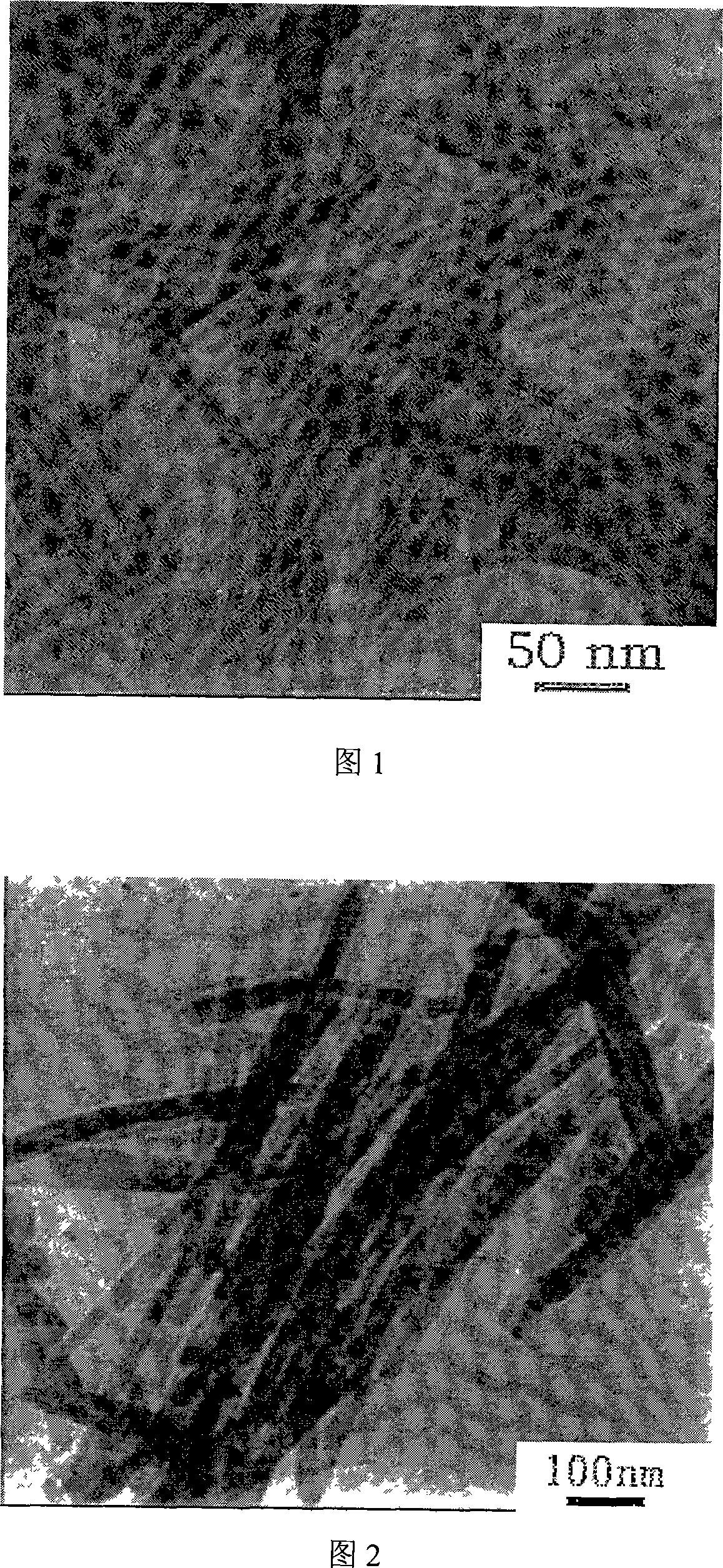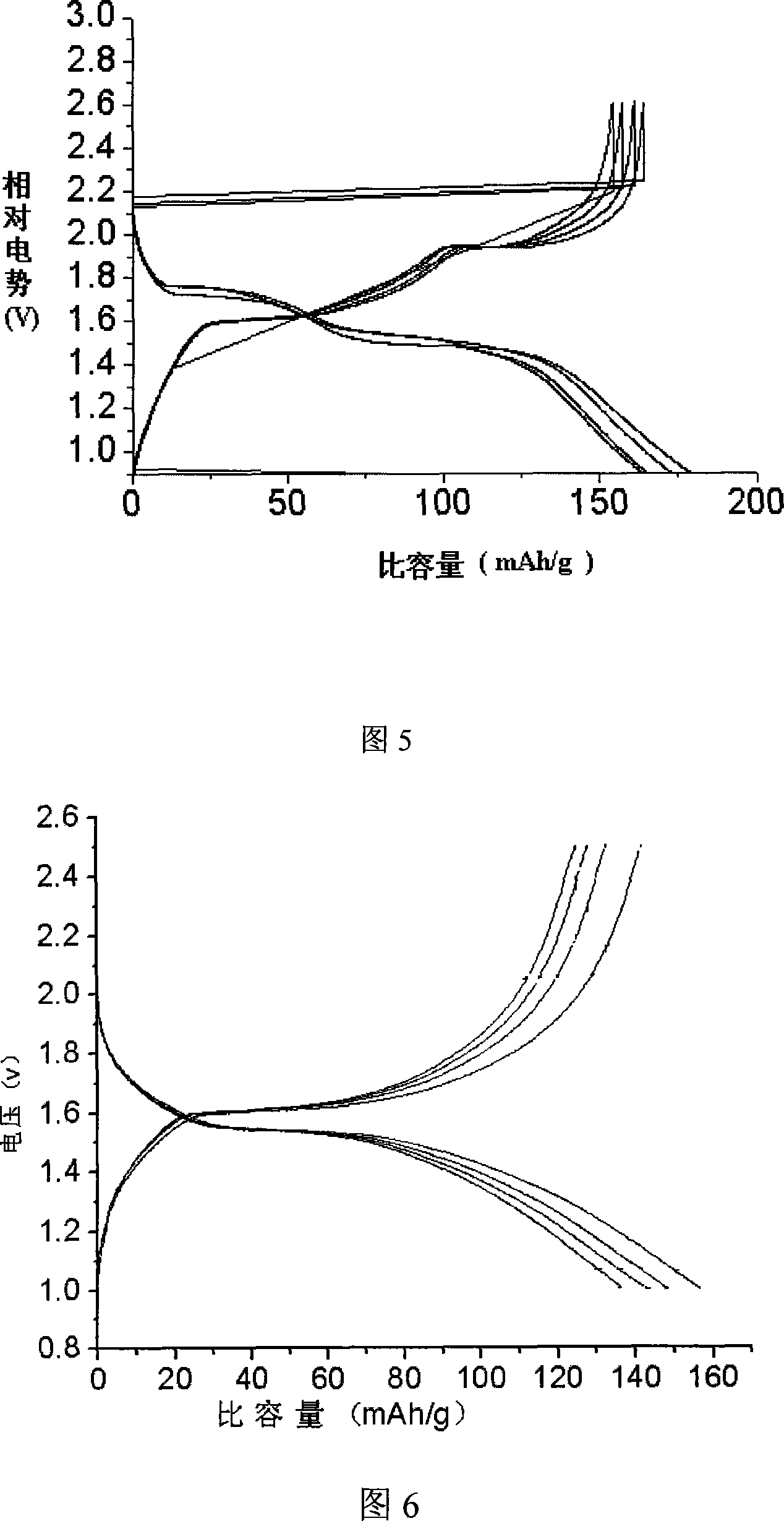Nano lithium titanate for Negative electrode material of cell or electrochemical vessel, and its and titanium dioxide composite preparing method
A technology of nano-lithium titanate and titanium dioxide, which is applied in the field of nano-materials, can solve the problems of difficulty in large-scale industrial production, large volume changes of alloy-type negative electrodes, and complicated preparation methods of carbon materials, and achieve good cycle stability and excellent electrochemical performance. , the effect of shortening the reaction time
- Summary
- Abstract
- Description
- Claims
- Application Information
AI Technical Summary
Problems solved by technology
Method used
Image
Examples
Embodiment 1
[0031] Embodiment 1, get 3g TiO 2 , slowly add 300ml of NaOH solution with a concentration of 3mol / L into a polytetrafluoroethylene container, control the temperature at 120°C, stir and add a reflux condenser, react for 24 hours to obtain nanotube sodium titanate, wash the above titanate Sodium nanotubes to a pH of 13, then suction filtered, dried, mixed with 12g of lithium nitrate and ground, melted and heated at 500°C for 2.5 hours, washed and dried to obtain a spinel lithium titanate product; as shown in Figure 1, The diameter of the nano-lithium titanate is about 8-10nm, and the length is about 100nm.
Embodiment 2
[0032] Example 2, get 10g of metatitanic acid (industrial slurry, weight content 44.04%, produced by Yida Fine Chemical Co., Ltd.), and slowly add 100ml of KOH solution with a concentration of 10mol / L into a polytetrafluoroethylene reaction vessel, Put it in a microwave oven, set it to medium-low heat (750W, work for 10s, stop for 12s), mechanically stir, add a reflux condenser, react for 6 hours to get potassium titanate nanowires with a diameter of several nanometers, wash until the pH is 7 and dry , and then take 25g of lithium citrate and lithium chloride mixture (weight ratio is 1:3) mixed with dried potassium titanate / titanic acid composite fiber, and put it in a sintering furnace, under the protection of nitrogen, melt and heat at 1000°C Exchanged for 2 hours, the lithium titanate-titanium dioxide composite was obtained, the morphology of which is shown in Figure 2; the crystal structure is shown in Figure 3, which contains two different crystal forms: cubic spinel struc...
Embodiment 3
[0033] Embodiment 3, get 3g TiO 2 , slowly add 300ml of NaOH solution with a concentration of 10mol / L into a polytetrafluoroethylene container, control the temperature at 120°C, stir and add a reflux condenser, react for 24 hours to obtain nanotube sodium titanate, wash the above titanate Sodium nanotubes to a pH of 6, then suction filtered and dried; then ground with a mixture of 5 g of lithium hydroxide and lithium nitrate (1:5 by weight), melted, heated and exchanged at 451°C for 48 hours, washed and dried to obtain the product Composite of spinel lithium titanate and titanium dioxide.
PUM
| Property | Measurement | Unit |
|---|---|---|
| diameter | aaaaa | aaaaa |
| length | aaaaa | aaaaa |
Abstract
Description
Claims
Application Information
 Login to View More
Login to View More - R&D
- Intellectual Property
- Life Sciences
- Materials
- Tech Scout
- Unparalleled Data Quality
- Higher Quality Content
- 60% Fewer Hallucinations
Browse by: Latest US Patents, China's latest patents, Technical Efficacy Thesaurus, Application Domain, Technology Topic, Popular Technical Reports.
© 2025 PatSnap. All rights reserved.Legal|Privacy policy|Modern Slavery Act Transparency Statement|Sitemap|About US| Contact US: help@patsnap.com



